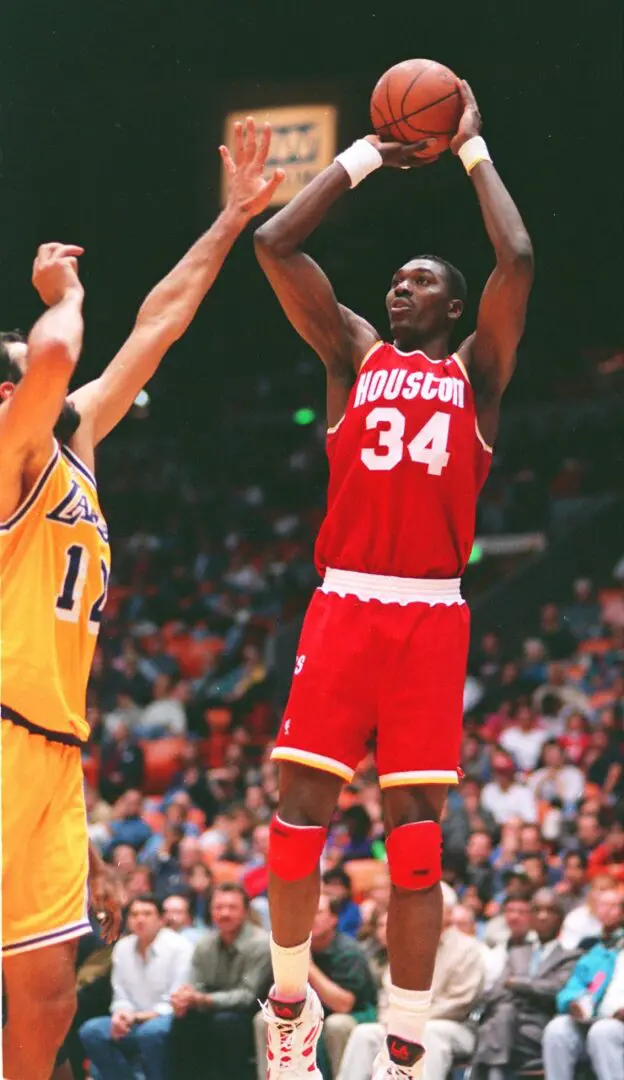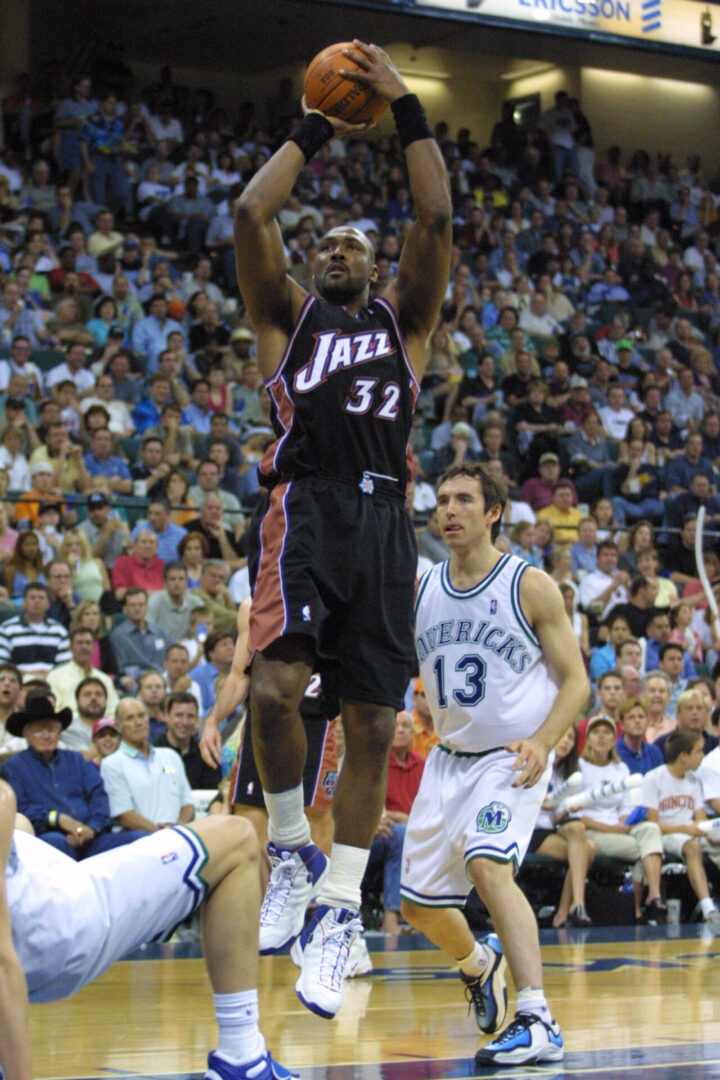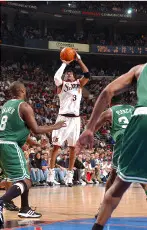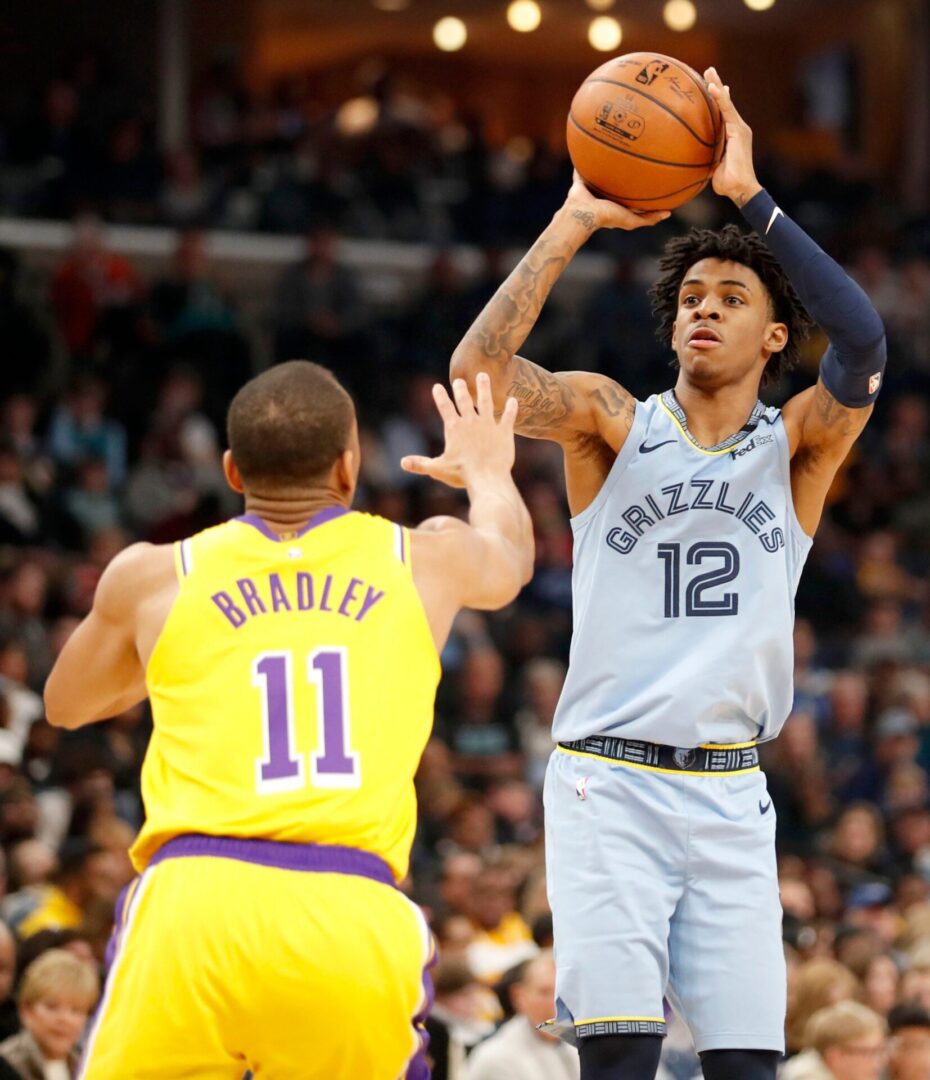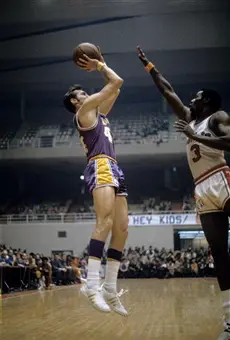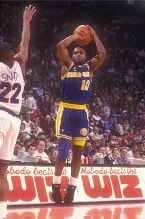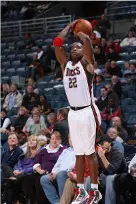POWER SHOOTING
TECHNIQUES AND TACTICS FOR THE JUMP SHOT

By Robert Tilitz
Finally! An in-depth and all-encompassing analysis of the jump shot. It is called the whole-body jump shot theory.
The focus of the new and original whole-body jump shot theory is on athleticism, power, accuracy, touch, protection and gun-turret adjustability.
The whole-body jump shots merge the jump of the jump shot and the release of the jump shot through the forward rotation of the shooting shoulder during the release. The forward rotation of the shooting shoulder also partly powers both the release of the whole-body jump shots and the rotation of the square-in-the-air jump required by many strongside pull-up jump shots, which in turn spearhead the attacking strongside game's full complement of shooting, driving and passing options.
There are two types of whole-body jump shots that are full-scale shooting-shoulder-centric and there are three types that are partially shooting-shoulder-centric. All are dynamic, but the two full-scale types, briefly described below, are more dynamic.
The whole-body elbow-out jump shot specializes in strongside to-the-basket pull-up jump shots, moderately angled strongside lateral pull-up jump shots from mid-range and strongside straight-up post-up jump shots.
The whole-body reachback jump shot specializes in strongside lateral fallaway pull-up jump shots from mid-range at both moderate and extreme angles and strongside fallaway post-up jump shots.
The whole-body strongside pull-up and post-up jump shot techniques are adaptable to long-range standing-start 3-point semi-jump shots, free throws, weakside jump shots and weakside stepbacks.
The lateral dribble, the most important dribble in basketball, is used for protection, acceleration, the first step, turning the corner, running, shooting, driving and the logo.
A critique of the prevailing but almost all wrong elbow-in-strokesnap jump shot theory, an analysis of ten player-sourced jump shots and more.
THE WHOLE-BODY JUMP SHOTS
The Whole-Body Elbow-Out Jump Shot
The Whole-Body Elbow-In Reachback Jump Shot
The Whole-Body Elbow-Out Reachback Jump Shot
The Whole-Body Reachup Jump Shot
The Whole-Body Elevated-Elbow-In Jump Shot
Stephen Curry’s One-of-a-Kind Whole-Body Sidegrip Jump Shot
The National Basketball Association is hard on jumpshooters. A big reason is that the players in the NBA unquestionably play the best individual and team defense to be found anywhere. But to make matters much worse, the NBA has all but officially endorsed a nameless, almost all wrong jump shot theory, called here the elbow-in-strokesnap jump shot theory after its main techniques. The unathletic and power deficient elbow-in-strokesnap jump shot theory has caused many otherwise good and even many otherwise great basketball players to underachieve. In addition, because the NBA is the universally recognized leader in basketball, the elbow-in-strokesnap jump shot theory has sabotaged the jump shot at every level of play worldwide.
The sabotage of the jump shot occurs because the elbow-in-strokesnap jump shot does not work well off the dribble at mid-range, especially off strongside moves and run-ups. That’s primarily because of the exclusion of the shooting shoulder from the elbow-in-strokesnap jump shot’s release. The exclusion of the shooting shoulder takes place because the elbow-in-strokesnap jump shot aligns/points the shooting elbow with/at the basket for accuracy. As a result, the shooting elbow sets up too far out front for the shooting shoulder to roll back. In general terms, the too-far-out-front setup disconnects by distance the strokesnap release mechanism from the jumpshooter’s body, which is the source of jump shot athleticism. In specific terms, no rollback is a major setup problem because it is the rollback that activates the shooting shoulder as a crucial source of athleticism and power during the release.
Excluding the shooting shoulder from the release precludes the merge of the jump of the jump shot, which is the core component of jump shot athleticism, with the release of the jump shot, which is the jump shot’s defining technique. The merge does not occur because excluding the shooting shoulder from the release eliminates the possibility of subsequent forward rotation of the shooting shoulder during the release, which is the dynamic that channels the athleticism and the power of the jump into the release. The exclusion of the forward rotation of the shooting shoulder from the release also removes one of the primary power sources both for the release and for the rotation of the square-in-the-air jump that many strongside pull-up jump shots require and all could use.
Prior to the elbow-in-strokesnap era, do-it-yourself jump shot development was the order of the day. The do-it-yourself era’s success rate for jump shot development was marginally better than the elbow-in-strokesnap era’s is today. But more importantly, the do-it-yourself approach, in contrast to the dogmatic elbow-in-strokesnap approach, allowed for variation. That’s a big reason why a few do-it-yourself era players were able to invent the athletic and powerful jump shots that the whole-body jump shot theory has identified and analyzed as its optimal jump shot models. While on the subject, the whole-body jump shot theory’s success rate for jump shot development in the future promises to be much better than anything seen previously.
Big picture, the elbow-in-strokesnap jump shot’s strongside and mid-range pull-up limitations, not to mention its awkward and difficult techniques, are directly responsible for the decline of the jump shot. As a consequence, there are not enough attacking mid-range pull-up jumpshooters to meet the demand. The decline of the jump shot has been partially mitigated by the 3-point shot, which fast-tracked the mass migration of shooters to 3-point land and therefore resulted in something of an action vacuum at mid-range.
But by no means did the 3-point shot cause of the decline of the jump shot. If anything, the decline of the jump shot caused the rise of the 3-point shot. The historical timeline of the 3-point shot establishes that its arrival long preceded the decline of the jump shot. The 3-point shot started in the American Basketball League (ABL) in 1961, resumed in the American Basketball Association (ABA) in 1967 and was finally adopted by the NBA in 1979. It was only in the 21rst century, the mid-2010s to be more precise, that the proliferating number of 3-point shot attempts indicated that the jump shot had to a great extent fallen out of favor.
So it is safe to say that the official creation of and the later growth in usage of the 3-point shot did not cause the decline of the jump shot. Instead, it was the near total embrace of the elbow-in-strokesnap theory at the professional and collegiate levels that occurred in the decades after the NBA adopted the 3-point shot that grew the number of 3-point shooters as it shrank the number of mid-range pull-up jumpshooters. At its inception, the 3-point shot was viewed as a gimmick intended to create a little excitement by adding value to long-range shot-making. As such, it was intended to be a side dish, not the main course.
When the decline of the jump shot became epidemic, however, the discussion and thinking around the 3-point shot began to drastically change. Where 3-point shooting had initially been considered a secondary skill, the decline of the jump shot forced the issue, converting it into a primary skill by default. Yes, the value added to the 3-point shot was an inducement. But more important was the diminished defensive pressure at long-range, which remedied the elbow-in-strokesnap jump shot’s difficulty getting off in the close quarters at mid-range.
Thus the 3-point revolution was inaugurated. Accordingly, the skillsets that defined positional play changed, with long-range perimeter shooting taking precedence over mid-range and post-up play. And of course the game of basketball itself drastically changed as a result of the 3-point revolution. While the reign of the jump shot had for years drawn the action closer to the basket with an emphasis on athleticism, the 3-point revolution reversed that trend and de-emphasized athleticism.
Plainly, that’s not a glorious origin story for the 3-point revolution. But basketball’s powers that be, including management, media, coaches and players, have done their best to cast it in a positive light by hyping the 3-point shot as the most advanced shooting skill. Whether that is the case or the argument made here that the jump shot’s blend of athleticism and shooting is a far more advanced shooting skill is to some degree an unwinnable war of words.
But there is also a related visual war where a winner will be determined by whether basketball fans like better to look at stationary/standing-start long-range semi-jump shots, which get in the air not because of a jump but because of the upward thrust of their release, or off-the-dribble pull-up jump shots, which are highly athletic. If it is the latter, if it turns out that the high praise from high places for the 3-point shot is a de facto coverup for the decline of the jump shot, then the 3-point revolution will need to be reversed.
Reversing the 3-point revolution would of course mean resurrecting the jump shot as basketball’s most important skill. Right away the elbow-in-strokesnap theory should be ruled out as a means of resurrection because it is what killed the jump shot in the first place. What’s needed is a jump shot theory that gets it right. That would be my new whole-body jump shot theory, which is written up in a book called Power Shooting. The whole-body jump shot theory’s techniques add up to a new performance technology for basketball. The explanations for how and why the whole-body jump shot theory’s techniques work are in the book and on this website. The proof is in the performance.
The following is a copy of Power Shooting the book’s table of contents:
TABLE OF CONTENTS
Introduction..………….…….........................……...…………………………………………...……….1
PART 1 – THE BASICS…………….…….………………………………………………………………3
Jump shot theory: The old vs. the new…………….……………………...………………….…...……4
Jump shot how-to: What works and what does not work…….....…………………….…...…...….…6
Jump shot breakthrough: New techniques, better results…………..………....…..………………....8
The shooting shoulder: Crucial to the jump shot……………………….…....………………...……..10
Reading: It makes a difference…………………….....………....………………………………..……13
PART 2 – THE FAILED ELBOW-IN-STROKESNAP JUMP SHOT THEORY...………………...…14
The alignment stance: The straitjacket effect…………………….………………………….........….15
Square the shoulders: During the jump, not before..……...................................…………...........16
The elbow-in shooting position: Locks in the straitjacket…….......……………………......………..17
Shifting the shooting-side foot forward: Activates the shooting shoulder...……………….....…....18
The behind/underneath shooting grip:
Stiffens with external rotation of the shooting hand setup.................………….......................….19
The fingertips shooting grip: Too small and too weak………….…………..……………….....…....20
Shooting at the top of the jump: Some of the time…………..............……...…………………...…21
The strokesnap release: Power deficient………………………….…...………...…………………..22
The follow-through: After the fact……….………………………...……………………....………..…23
A summary of the elbow-in-strokesnap jump shot theory….…………………………………....….24
Source chart……..…………….………………………………………...…….…………….……….....24
Sequence….………………………….………………………...…………………………..…...………24
Final comments……..………………………………..…….…………………………….….…...…….25
PART 3 – PLAYER-SOURCED JUMP SHOTS…….………………………..………………......….26
The squat shot: Good power, poor athleticism (e.g., Magic Johnson)….……………….….…….27
The elbow-in-push jump shot:
Limited attack capability (e,g., Anthony Davis)…………….………….………………………….…29
The weakside semi-sideways jump shot:
Easy, not effective, explains its popularity (e.g., Goran Dragic)………...……….......………...…31
The cupgrip jump shot:
Long on power but short on control (e.g., Tim Duncan)………...…...….........………………..….34
The elbow-out-strokesnap jump shot:
Good start, mixed results (e,g., Jimmy Butler)……….….…………..…….…………………….…36
The wrongside jump shot:
Modest benefits, major defects (e.g., Kevin Martin)…….……………….……..………………....38
The reachback-strokesnap jump shot: Not fit for a king (e.g., LeBron James)..……………….41
The roofgrip jump shot: Clamps down on athleticism (e.g., Al Horford)…….…………………..45
The winggrip jump shot: Avoids external rotation
of the shooting hand during setup (e.g., Peja Stojakovic)……......................…………….........47
The cradlegrip jump shots:
Easy power, limited athleticism (e.g., Jamal Murray)……………………...……………………...51
PART 4 – POWER SHOOTING’S WHOLE-BODY JUMP SHOT THEORY....………………....56
Whole-body primer: Push and pull……………………………………..…..……………….………58
The strongside game: The way to play……………...…………………...….……………………..60
The lateral dribble: Protection, acceleration, the first step,
turning the corner, running, shooting, driving and the logo…..…..………...………………...….66
The elbow-out jump shot: Strongside to-the-basket pull-ups
and moderately angled strongside lateral pull-ups –
also post-up, weakside and 3-point adaptable……..…….......…........………………..........…...69
The elbow-out jump shot as executed by Reggie Miller…..……...……..…..………………...…74
Elbow-out jump shot comparisons: Shot-putting and more..………...…....……………………..75
The reachback jump shot: Strongside lateral pull-ups
from mid-range at both moderate and extreme angles –
also post-up, weakside and 3-point adaptable……………….……….……………………….......77
The reacback jump shot as executed by Kobe Bryant……………………..………………..……83
Reachback jump shot comparisons: Throwing and more……………..…...……………….…….84
The reachup jump shot: The less reachback, the better (e.g., Kawhi Leonard).……………….86
The elevated-elbow-in jump shot:
Small change, big improvement (e.g., Kevin Durant)…………...…….………………...…..……89
Stephen Curry’s sidegrip jump shot: Max power, max control…..…………...……………….…92
Kyrie Irving: Jump shot diversity………………………………………….….……………………..97
The footwork for the strongside pull-up jump shot: The two-step stop….…………………..…102
How to set up the shooting grip for strongside pull-up jump shots:
The key to the kingdom…………….……………………………………………...…….......…….104
Shooting hand control of the jump shot: The right tool for the job...…….….………………….107
The jump of the jump shot: What’s it all about, Luka?…..……………..….……………….……112
Free throw shooting: Derived from the player’s jump shot…………..…..….……………….....117
Long-range/3-point semi-jump shots:
The up-and-out effort to shoot, not a jump, gets them in the air…......…..……………………119
The sky hook: From understanding to revival……………….…………...………………….…..123
How to play point guard: Shoot first, pass preferred……………………...……………….……128
Jump shot instruction: Theory meets reality………………….....………....……………….……131
A summary of Power Shooting’s whole-body jump shot theory.….…....……………………...133
Source chart…….……………………………………….……………………...……………….….133
Sequence….….………………………………………………………………………………...…...133
Final comments……...…………….……………………………………………………..…...…….135
CONTACT INFORMATION
Email address:
rtilitz@optimum.net
Mailing address:
Robert Tilitz
6629 Broadway Apt 2H
Bronx, NY 10471








